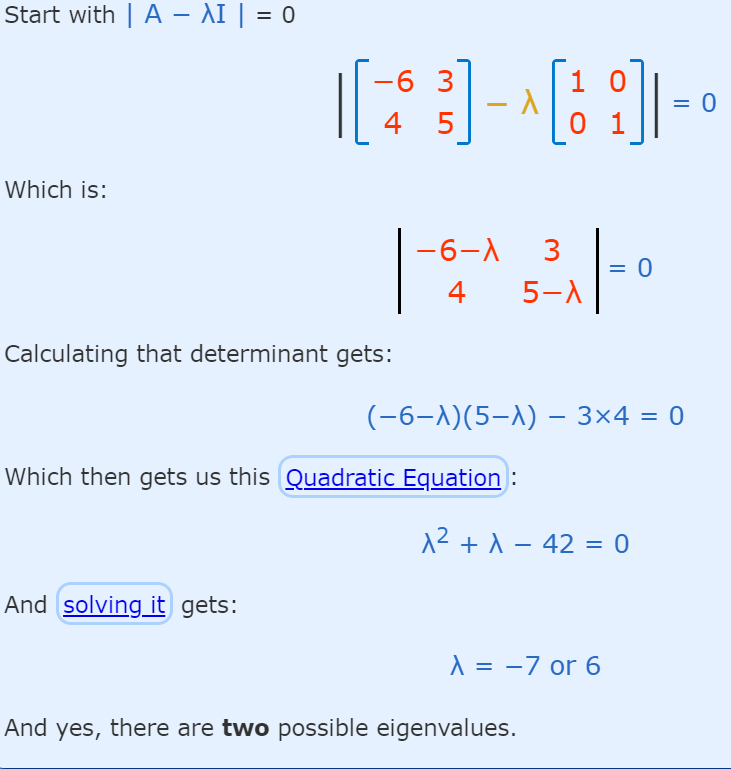Eigenvalues & Eigenvectors | Engineering Mathematics - Civil Engineering (CE) PDF Download
Eigen Values and Eigen Vectors
Eigen vector of a matrix A is a vector represented by a matrix X such that when X is multiplied with matrix A, then the direction of the resultant matrix remains same as vector X.
Mathematically, above statement can be represented as:
AX = λX
where A is any arbitrary matrix, λ are eigen values and X is an eigen vector corresponding to each eigen value.
Here, we can see that AX is parallel to X. So, X is an eigen vector.
Method to find eigen vectors and eigen values of any square matrix A
We know that,
AX = λX
=> AX – λX = 0
=> (A – λI) X = 0 …..(1)
Above condition will be true only if (A – λI) is singular. That means,
|A – λI| = 0 …..(2)
(2) is known as characteristic equation of the matrix.
The roots of the characteristic equation are the eigen values of the matrix A.
Now, to find the eigen vectors, we simply put each eigen value into (1) and solve it by Gaussian elimination, that is, convert the augmented matrix (A – λI) = 0 to row echelon form and solve the linear system of equations thus obtained.
Some important properties of eigen values
- Eigen values of real symmetric and hermitian matrices are real
- Eigen values of real skew symmetric and skew hermitian matrices are either pure imaginary or zero
- Eigen values of unitary and orthogonal matrices are of unit modulus |λ| = 1
- If λ1, λ2…….λn are the eigen values of A, then kλ1, kλ2…….kλn are eigen values of kA
- If λ1, λ2…….λn are the eigen values of A, then 1/λ1, 1/λ2…….1/λn are eigen values of A-1
- If λ1, λ2…….λn are the eigen values of A, then λ1k, λ2k…….λnk are eigen values of Ak
- Eigen values of A = Eigen Values of AT (Transpose)
- Sum of Eigen Values = Trace of A (Sum of diagonal elements of A)
- Product of Eigen Values = |A|
- Maximum number of distinct eigen values of A = Size of A
- If A and B are two matrices of same order then, Eigen values of AB = Eigen values of BA
Example: Solve for λ:

|
65 videos|122 docs|94 tests
|
FAQs on Eigenvalues & Eigenvectors - Engineering Mathematics - Civil Engineering (CE)
| 1. What are eigenvalues and eigenvectors? |  |
| 2. How do eigenvalues and eigenvectors relate to computer science engineering? |  |
| 3. What are some important properties of eigenvalues and eigenvectors? |  |
| 4. How can eigenvalues and eigenvectors be computed? |  |
| 5. Can eigenvalues and eigenvectors be used to diagonalize a matrix? |  |






















